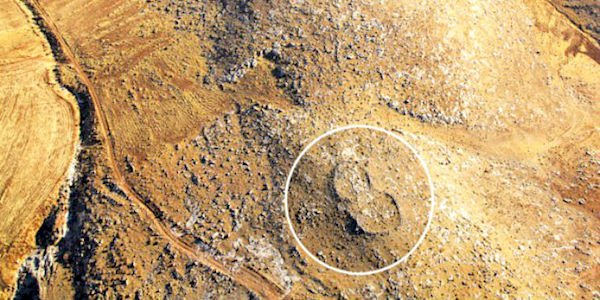Footprints of God? Archaeologists baffled by giant sandal-shaped rocks near the Jordan River

They are being dubbed the 'footprints of God' – large sandal-shaped formations in the earth that archaeologists think date back to the time the Israelites entered the Promised Land.
The possible dates of the mysterious formations are causing excitement among Israeli archaeologists because they think they may even be linked to Joshua, who led the Israelites through the desert to the Promised Land after the death of Moses.
Despite the nickname, archaeologists have established that they are in fact manmade, not natural, so they are not God's literal footprint.
Yet, given the possible timing and their location, they may be His figurative footprint as archaeologists are asking the serious question of whether they were indeed erected by Joshua and his followers.
There are six of the sandal-shaped rock structures in total, reports WND.com, and they are located just east to the Jordan River.
They are also impressive in scale, with one larger than two football fields in length.
Archaeologist Adam Zertal is especially excited about one of the structures located on Mount Ebal, which is recorded in the Bible as the place Moses instructed the Israelites to place the written curses that come as a result of breaking the law.
The structure is interesting to Zertal because it has a unique feature, a giant altar in the middle that measures around 23 feet by 30 feet. Some excavations have been done at the site and reveal findings of charred animal bones and ash in and around the altar.
Zertal thinks the altar could well be the one Joshua made after the Israelites first entered the Promised Land, as described in Joshua 8:30.
Researcher Adam Aliyahu Berkowitz is drawing similar biblical conclusions and believes the sandal-shape is not a coincidence but rather a deliberate choice of design on the part of the Israelites to commemorate the promise of God recorded in Deuteronomy 11:24, which promises them that every place their feet tread 'shall be yours.'
Remnants of the Israelites or some other explanation: what do you think?











